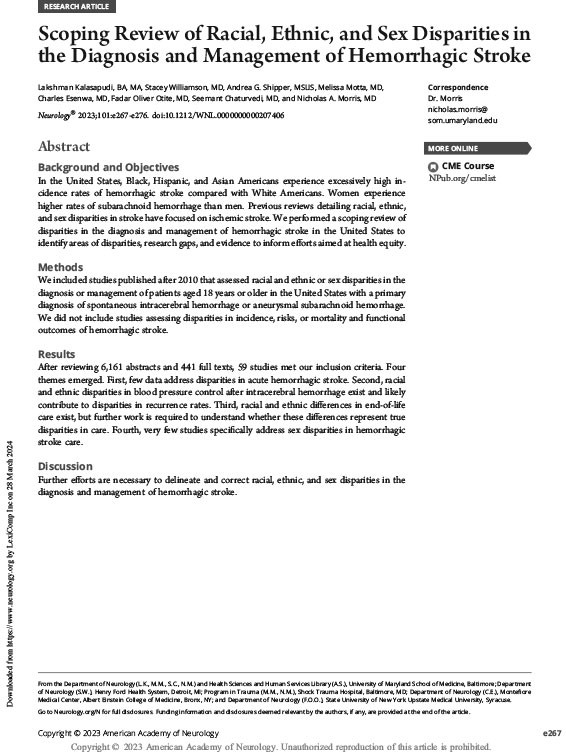Scoping Review of Racial, Ethnic, and Sex Disparities in the Diagnosis and Management of Hemorrhagic Stroke
July 2023
Abstract
Background and Objectives
In the United States, Black, Hispanic, and Asian Americans experience excessively high incidence rates of hemorrhagic stroke compared with White Americans. Women experience higher rates of subarachnoid hemorrhage than men. Previous reviews detailing racial, ethnic, and sex disparities in stroke have focused on ischemic stroke. We performed a scoping review of disparities in the diagnosis and management of hemorrhagic stroke in the United States to identify areas of disparities, research gaps, and evidence to inform efforts aimed at health equity.
Methods
We included studies published after 2010 that assessed racial and ethnic or sex disparities in the diagnosis or management of patients aged 18 years or older in the United States with a primary diagnosis of spontaneous intracerebral hemorrhage or aneurysmal subarachnoid hemorrhage. We did not include studies assessing disparities in incidence, risks, or mortality and functional outcomes of hemorrhagic stroke.
Results
After reviewing 6,161 abstracts and 441 full texts, 59 studies met our inclusion criteria. Four themes emerged. First, few data address disparities in acute hemorrhagic stroke. Second, racial and ethnic disparities in blood pressure control after intracerebral hemorrhage exist and likely contribute to disparities in recurrence rates. Third, racial and ethnic differences in end-of-life care exist, but further work is required to understand whether these differences represent true disparities in care. Fourth, very few studies specifically address sex disparities in hemorrhagic stroke care.
Discussion
Further efforts are necessary to delineate and correct racial, ethnic, and sex disparities in the diagnosis and management of hemorrhagic stroke.

